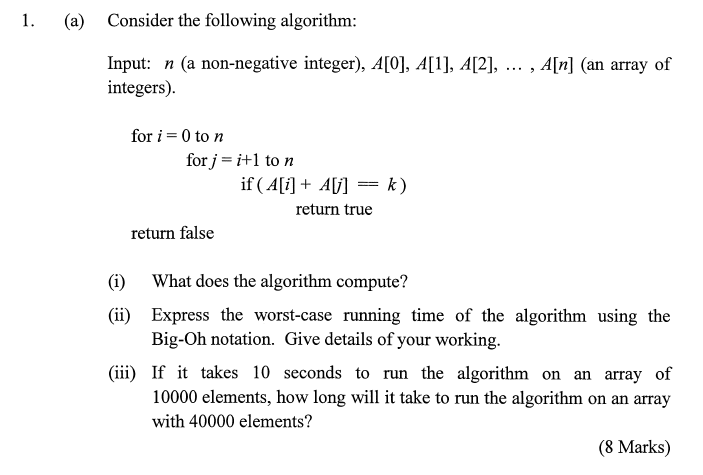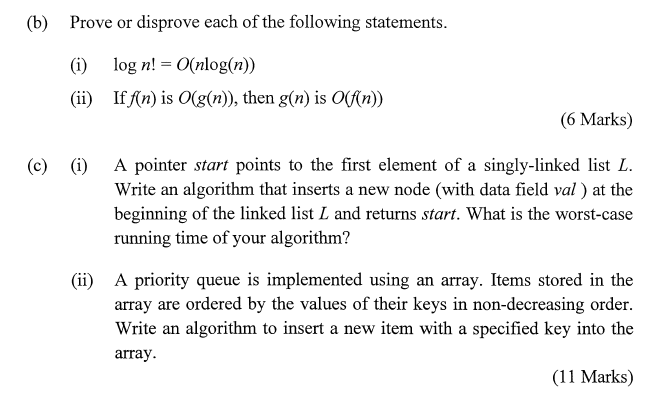Answered step by step
Verified Expert Solution
Question
1 Approved Answer
Please answer all parts of the question (a) Consider the following algorithm: Input: n (a non-negative integer), A[0], A[1], A[2], ellipsis, A[n] (a array of
Please answer all parts of the question


Step by Step Solution
There are 3 Steps involved in it
Step: 1

Get Instant Access to Expert-Tailored Solutions
See step-by-step solutions with expert insights and AI powered tools for academic success
Step: 2

Step: 3

Ace Your Homework with AI
Get the answers you need in no time with our AI-driven, step-by-step assistance
Get Started


